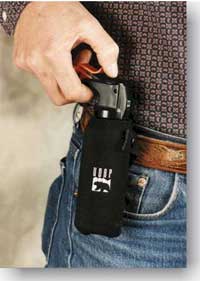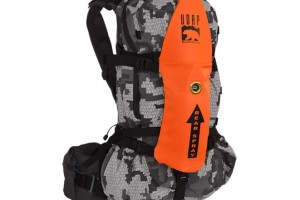[pdf-embedder url=”http://www.bearspray.com/wp-content/uploads/2020/09/Bear-Spray-Advisory.pdf” title=”Bear Spray Advisory”]
Category: Bear Spray
UDAP is Awarded “Best New Hunting Accessory 2017” at the Big Rock Sports West Show.
UDAP’s New Griz Guard® Holster for 2017
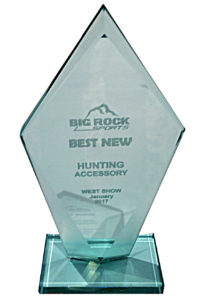
UDAP Industries was awarded the best new hunting accessory for 2017 by Big Rock Sports. This took place in Las Vegas, NV at Big Rock Sports West Show. “We are very excited about this award as this was the 1st event that our new bear spray item with Griz Guard® holster was featured”, said Tim Lynch UDAP’s General Manager. “We received an overwhelming amount of interest in our new item and are excited to begin shipping it to stores early this spring.” Big Rock Sports is a major distributor of sporting goods throughout the nation. UDAP has been A Big Rock vendor for several years. Working together, they provide UDAP products to many retail stores.
The Item (#12SO Bear Spray with Griz Guard® holster) is a new for UDAP and the bear spray industry. It is the first bear spray sold with an injected molded holster that allows the user to clip-it to their waist and other locations without the need to wear a belt. The Griz Guard® holster still allows a person to deploy bear spray directly from the holster and like UDAP’s other holsters it provides quick, silent, and easy access to the trigger.
With more and more people enjoying the outdoors, not everyone wears a belt. “We see folks hiking in sweats and shorts all the time”, says Lynch. The Griz Guard® holster will make it easier to carry bear spray. It is more convenient to take the spray on and off as well.
The Griz Guard® holster is patent pending and made in the USA. Shipments will begin arriving at stores in March 2017. www.BearSpray.com
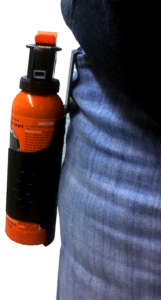
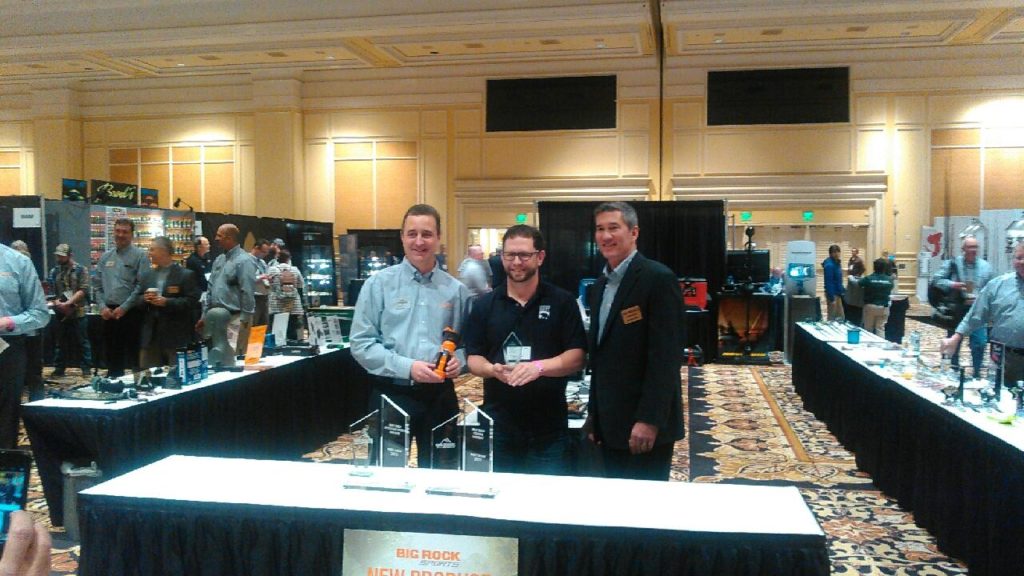
IGBC CLARIFIES BEAR SPRAY RECOMMENDATIONS
IGBC CLARIFIES BEAR SPRAY RECOMMENDATIONS
A victory for the safety of people in bear country recently occurred when the Interagency Grizzly Bear Committee (IGBC) took unanimous action to clarify its bear spray recommendations. Comprised of representatives of various state, federal, and Canadian wildlife management agencies, the IGBC helps coordinate the recovery of grizzly bear populations, and provides public information about bear safety and the use of bear spray. The IGBC has historically recommended that bear sprays have a minimum duration of six seconds. Recently, however, the IGBC adopted a new policy that recommends the use of any EPA-registered bear spray product without reference to spray duration, that is, the time it takes for a can to discharge completely. The IGBC correctly recognized that existing federal bear spray registration standards are adequate for public safety and that consumers should follow the manufacturer’s instructions for proper use of their selected bear spray product. Exercising its collective professional judgment, the IGBC appropriately withdrew its outdated six-second spray duration recommendation, which lacked any scientific or empirical justification, and conflicted with modern bear spray studies.
Following the IGBC’s decision, UDAP has received various inquiries about the meaning of and reasons for the IGBC’s action. Many of these questions appear to have arisen from a misunderstanding of how bear spray is regulated, how it is intended to be used, and from incorrect or incomplete reports in the media. The following Question and Answer narrative is intended to provide clarity for those who have reasonably been left confused by recent media coverage. Customer safety is UDAP’s number one priority, and we feel an obligation to provide clear, accurate, and complete information to our customers. If you have questions or need further information, please do not hesitate to contact UDAP’s leadership here, or visit UDAP’s website. We would be delighted to hear from you.
Who regulates bear spray?
Bear spray is considered a pesticide and is regulated by the U.S. Environmental Protection Agency (EPA) pursuant to broad authority granted under the Federal Insecticide, Fungicide, and Rodenticide Act (FIFRA). FIFRA establishes that all pesticides sold or distributed in the United States must be registered by the EPA. Registration is based on evaluation of scientific data, product performance testing, and assessment of the risks and benefits of a product’s use. Currently, there are only four EPA-registered bear spray products on the market. The EPA also regulates pesticide labels and instructions, which allows the agency to control how products are used. It is unlawful for any person to use a registered pesticide product, such as bear spray, in a manner inconsistent with its labeling.
What role does the IGBC have regarding bear spray?
Unlike the EPA, the IGBC does not have statutory authority to regulate bear spray, or its registration, labeling, or use. Instead, the IGBC’s mission is to “Recover, manage, and secure the future of grizzly bear populations and their habitat so that grizzly bears no longer require protections afforded by the [Endangered Species Act].” The use of bear spray is an important management tool that serves the IGBC’s mission by helping promote the recovery and survival of the grizzly bear as a species. Bear spray is a powerful, non-lethal deterrent that, when used correctly, can stop a bear attack or lessen its severity without permanently harming the animal. It is an effective alternative to lethal personal protection options, such as firearms, and its use can both reduce human injuries caused by bears and decrease the number of bears killed in self-defense. For these reasons, the IGBC recommends bear spray when used in conjunction with proper bear avoidance safety techniques, and has historically provided the public with guidelines for selecting an adequate bear spray product.
What was the IGBC’s recent action?
The IGBC recently revised and clarified how it will provide the public with information and recommendations about selecting bear spray. During the infancy of commercial bear spray development in the 1990s, the IGBC established a set of bear spray guidelines that included such things as recommended spray distance and pattern, concentration of active ingredient, minimum net weight, and minimum spray duration. For years, the IGBC recommended the use of bear spray with a minimum spray duration of six seconds.
On December 13, 2016, the IGBC Executive Committee unanimously withdrew the six-second duration guideline in favor of recommending the use of any EPA-registered bear spray product, without regard to a numeric bear spray duration criterion. The IGBC recognized that EPA’s current bear spray registration standards are adequate, and it committed to rewriting its bear spray guidelines so that public has the most accurate and reliable information available. The IGBC will publish its revised bear spray recommendations by the end of February 2017.
Please note that the IGBC’s action does not, in any way, allow for the production of small, palm-sized pepper sprays to be marketed as “bear spray.” EPA’s pesticide registration requirements prevent this from occurring.
What led to the IGBC’s clarification of its bear spray recommendations?
The exercise of sound professional judgment and scientific reasoning is what most directly led to the IGBC’s revision of its bear spray recommendations. UDAP played a supporting role by providing information and initiating discussion and review of the six-second spray duration guideline. In June 2016, the IGBC invited UDAP to make a presentation to the Executive Committee at its summer meeting in Bonners Ferry, Idaho. At the public meeting, UDAP highlighted the lack of scientific or empirical support for the six-second spray duration guideline and explained how the recommendation served no purpose other than to improperly promote or endorse one particular commercial bear spray manufacturer over all others. After its presentation, UDAP requested the following two actions:
- That the IGBC withdraw the six-second spray duration recommendation and reconsider the committee’s role in issuing public position statements on bear spray product performance and efficacy; and
- That the IGBC fulfill its promise not to promote or endorse one commercial bear spray product over any other.
The IGBC agreed to consider UDAP’s requests and formed a bear spray work group to evaluate its bear spray recommendations and appearance of implied product endorsement. At the IGBC’s winter meeting on December 13, the work group reported its findings to the Executive Committee and recommended taking action consistent with UDAP’s request. Upon the work group’s recommendation, the IGBC unanimously agreed to continue to recommend use of EPA-registered bear spray products and to rewrite its bear spray recommendations/guidelines without reference to a numerical spray duration criterion. The IGBC also agreed to continue to be vigilant and conscious not to promote or endorse any one commercial bear spray product over another, and decided to add an additional disclaimer to its website.
The IGBC’s actions are good for public safety and government transparency. In revising its bear spray recommendations, the IGBC has embraced science and sound professional judgment, and demonstrated a commitment to providing the public with accurate, reliable, and meaningful information about bear spray.
Did UDAP file “legal action” against the IGBC?
No, contrary to erroneous media reports, UDAP has not filed legal action against the IGBC in any court or administrative body. UDAP presented its concerns in an open public forum at the IGBC’s regularly scheduled summer meeting. UDAP submitted written materials and a PowerPoint presentation for the IGBC’s review and consideration, and engaged the IGBC in a professional, courteous, and productive manner, without any need for litigation.
What were UDAP’s main concerns in bringing this issue to the IGBC?
UDAP’s main concerns were: (1) public safety, (2) the need for accurate public information about bear spray, and (3) the basic notion that bear spray recommendations ought to be grounded in sound science, not speculative opinion.
UDAP’s core mission is to provide for the safety of people who are hunting, fishing, and recreating in bear country, and its products are specifically designed to fulfill that purpose. As a company that stakes its reputation on keeping people safe and alive in bear country, UDAP was concerned that the IGBC’s six-second bear spray guideline was not based on science or empirical data, and yet it was being represented to the public as a benchmark for product safety and performance. In truth, there is no scientific literature or peer-reviewed research concluding that bear spray with a six-second spray time is any safer or more effective than bear spray with a four- or five-second spray time, when used properly. Indeed, the leading contemporary bear spray researcher, Dr. Tom S. Smith, has concluded that “based on data we collected, there is no indication that any of the commercially available products bests another by durations that vary by a few seconds,” but instead “all fall within an acceptable range of effectiveness in light of the results of the study I conducted on the efficacy of bear spray in Alaska.”
Consistent with Dr. Smith’s observations, EPA-registered bear spray products have proven to be effective, non-lethal tools for deterring bear attacks, and there is no evidence that any EPA-registered bear spray product is unsafe or inadequate for its intended purpose, even though a majority of bear sprays do not meet the old six-second guideline. There is an obvious disconnect between the six-second guideline and the actual performance and efficacy of bear spray in the field, and as long as the six-second guideline remained in circulation, the public was not receiving the most accurate and reliable information in selecting bear spray. UDAP – with the support of another bear spray producer, scientists, experts in human-bear interactions, and users of bear spray – contacted the IGBC to voice its concerns and set the record straight on the six-second rule.
Upon review of UDAP’s presentation, written submissions, and its own independent research, the IGBC unanimously decided to remove the duration guideline from its public recommendations. It is anticipated that the IGBC will publish its revised bear spray recommendations and white paper by the end of February 2017.
UDAP supports the IGBC’s decision, and applauds the Executive Committee’s efforts to provide the public with accurate information concerning bear spray and its use. The IGBC members showed leadership and interest in public safety by basing its decision on available science and proven experience, rather than the speculative opinions of those advocating for an arbitrary six-second rule. Those living, working, and recreating in bear country are safer today and will gain more confidence in the use of bear spray due to the actions of the IGBC and its clarified recommendations. Removal of the six-second rule will also eliminate favoritism, alleviate concerns about implied government endorsement of commercial products, and contribute to better public education concerning bear spray. Those looking to purchase bear spray should seek out an EPA-registered bear spray product and follow the manufacturer’s instructions printed on the label for its proper use.
If you wish to learn more about the underlying fallacies of the six-second guideline, please see UDAP’s written submissions to the IGBC, here and here, and its PowerPoint presentation, here.
Where did the erroneous “six-second” recommendation come from?
The origin of the six-second spray duration recommendation is shrouded in uncertainty. What is known is that in the late 1990s, when commercial bear spray use and development was in its relative infancy, the IGBC tasked the Yellowstone Ecosystem Subcommittee (YES) to issue a bear spray position statement to inform and educate the public about the use of bear spray for self-defense in the backcountry. The YES committee recommended bear spray with a range of 25 feet and use of the “largest size” can available, to accommodate things like environmental conditions (wind, rain, cold), highly agitated bears, multiple bear encounters, multiple charge encounters, and having reserve spray for the hike out.
The IGBC subsequently outsourced its review of bear spray to the Center for Wildlife Information (CWI), a now defunct non-profit organization which was led by an individual without any formal scientific training and who is believed to have had a close association with the only bear spray company (at the time) to produce a can that sprayed for longer than six seconds. In 1999, CWI presented its bear spray recommendations and urged the IGBC to adopt a six-second spray duration guideline, which it did. It was at this time that the YES committee’s original recommendation to use the “largest size” can available was transformed into a numeric duration recommendation.
While the six-second duration recommendation has persisted for years, the underlying basis and justification for the guideline has never been substantiated with scientific or empirical data, despite repeated inquiries and a formal request under the Freedom of Information Act, 5 U.S.C. § 552, for documents, studies, reports, and any other supporting information. The lack of any supporting documentation calls into question the transparency and neutrality of the process, reasoning, and justification for the six-second rule.
Promoters of the duration guideline continue to refer to the research of Dr. Charles Jonkel and Carrie Hunt from the 1970s and 1980s to support their position. While the importance of Dr. Jonkel’s and Ms. Hunt’s research to the development of bear spray as an effective deterrent cannot be overstated, their work simply does not conclude or provide direct support for any numeric duration guideline, let alone a six-second requirement. At most, Ms. Hunt’s research suggests the need for bear spray that has “repeated application,” which all EPA-registered bear sprays are capable of doing. Moreover, Dr. Jonkel’s and Ms. Hunt’s research predates the EPA’s regulation and oversight of bear spray, and so they lacked any opportunity to test the performance and efficacy of the products now on the market, which significantly limits the relevance of their research to the question of duration.
Another misperception commonly held by proponents of the six-second rule is that six seconds is needed to compensate for various contingencies, such as repeated attacks, multiple bear scenarios, weather, and the hike out. These scenarios do not, however, lend themselves to a quantifiable duration standard and they fail to establish why six seconds is the “magic” number to accommodate all these situations, as opposed to some other number. What these scenarios do suggest is the need for a bear spray capable of deploying repeated bear-stopping bursts. As the IGBC’s own bear spray testing shows, even a 7.9 oz can with a four-second discharge time is more than capable of accommodating these various scenarios, assuming it is deployed properly (i.e., using one-second bursts, as per manufacturer instructions). Moreover, these scenarios can be accommodated in other ways, such as recommending use of the largest volume canister of spray, as the YES committee suggested, or by carrying multiple cans of bear spray.
If not duration, what is important when choosing a bear spray product?
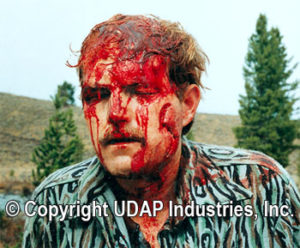 As a grizzly bear attack survivor, Mark Matheny – the founder and president of UDAP – encourages the use of a high-volume spray. Published studies demonstrate that in many bear encounters an individual has less than two seconds to react before the bear makes contact. In these situations, it is not a matter of how long the can sprays in a constant duration, it is a matter of how quickly the product can deliver a bear-stopping dose of spray. Bear spray is specifically designed to be deployed in repeated bursts, and UDAP bear spray, in particular, is designed to deliver a powerful, high-volume spray with each burst, when it’s needed most. Given bear spray canisters with equal potency and spray characteristics, other than duration, would you rather have the spray that comes out slower (longer duration/lower volume) or the one that comes out faster (shorter duration/higher volume) if a grizzly bear is charging at you?
As a grizzly bear attack survivor, Mark Matheny – the founder and president of UDAP – encourages the use of a high-volume spray. Published studies demonstrate that in many bear encounters an individual has less than two seconds to react before the bear makes contact. In these situations, it is not a matter of how long the can sprays in a constant duration, it is a matter of how quickly the product can deliver a bear-stopping dose of spray. Bear spray is specifically designed to be deployed in repeated bursts, and UDAP bear spray, in particular, is designed to deliver a powerful, high-volume spray with each burst, when it’s needed most. Given bear spray canisters with equal potency and spray characteristics, other than duration, would you rather have the spray that comes out slower (longer duration/lower volume) or the one that comes out faster (shorter duration/higher volume) if a grizzly bear is charging at you?
In addition to having a high volume, bear spray should be registered by the EPA and be clearly labeled for use on bears. It should spray in an expanding fog pattern with sufficient distance to intercept a charging bear, and it should contain the highest concentration of capsaicin and related capsaicinoids regulated by EPA (currently, 2.0%). The net weight of bear spray should be at least 225 grams or 7.9 ounces, as required by the EPA, and it should be capable of providing repeated bursts of spray.
While the above considerations are important for selecting a bear spray product, it is even more critical for the user to be familiar with the specific performance characteristics of their chosen product and to understand and follow the manufacturer’s instructions for its use . . . and to practice.
I have seen numerous instructions for the proper use of bear spray, but they are not always consistent. Which one should I follow?
You should follow the manufacturer’s instructions printed on the label of your chosen bear spray product. Bear spray is regulated by the EPA and federal law requires users and consumers of bear spray to deploy the product in a manner consistent with instructions on the label.
Unfortunately, there is an ever-increasing amount of conflicting information about the proper use of bear spray being produced in media reports, government websites and publications, and by special interest groups. While the intent of these sources is to educate the public on how to effectively use bear spray, the unintended consequence has been consumer confusion and misunderstanding. It is critically important to recognize that not all bear spray products perform in exactly the same manner, and the variability in performance characteristics across product lines makes it exceedingly difficult and counterproductive to develop a set of generic bear spray recommendations to apply across the board.
For example, some sources instruct users to “spray for 2-3 seconds” when the bear is approaching. This instruction ignores the fact that not all bear sprays discharge the same amount of active ingredient per unit of time. For instance, a one-second high-volume burst from a UDAP can may discharge the equivalent amount of active ingredient as a two- or three-second burst from another brand of bear spray. UDAP’s EPA-approved instructions direct users to release a one-second burst of spray as an attacking bear is charging. To instruct a UDAP user to unnecessarily deplete his or her canister with a two- to three-second spray is not only irresponsible and dangerous, it also encourages use of the spray in a manner inconsistent with its label.
Other sources instruct the use of a zig-zag pattern or a side-to-side movement while spraying. This action is completely unnecessary for UDAP products, which have a broad spray pattern and are designed to billow outward in an expanding fog. Using a side-to-side motion while spraying not only wastes bear spray product, it decreases the effective distance the spray will travel, as can be seen in this video.
Bear spray producers continually test their products and develop specific, EPA-approved instructions for how to most effectively deploy the spray given the canister’s specific performance characteristics. Users should understand and follow the instructions printed on the label of their chosen bear spray product.
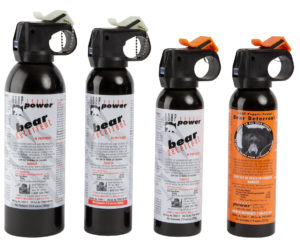
Please, tell me more about UDAP.
There are more people than ever recreating, hunting, fishing, and enjoying the wild lands of North America and elsewhere around the globe. In many cases, they are doing so in the midst of prime grizzly/brown and black bear habitat, which has led to more conflicts among humans and bears than ever before. With bear populations on the rise, the need for a reliable and effective bear deterrent is as important as ever.
At UDAP Industries, we provide our customers with bear spray and personal protection products that help keep people safe in bear country. Our bear spray products are powerful and robust, with several sizes, including the largest can of bear spray on the market. Our customers tell us that the power and reliability of our products is the reason that UDAP bear spray is one of the most trusted and relied upon bear spray products available in the marketplace.
UDAP produces three sizes of bear spray:
- UDAP 7.9 oz. Bear Spray (sprays for approximately 4 seconds continuously)
- UDAP 9.2 oz. Bear Spray (sprays for approximately 5.4 seconds continuously)
- UDAP 13.4 oz. Bear Spray (sprays for approximately 7 seconds continuously)
Be prepared, carry bear spray, read the label, and know how to use it. Practice makes perfect sense.
For more information and bear safety tips visit www.BearSpray.com.
Hiking and Backpacking With a Dog Safety Tips

Hiking and backpack camping with dogs is enjoyable. Dogs are excellent companions in the backcountry, although dogs can also pose several problems for backpackers and hikers. One major issue when you are in the backcountry with a dog is that it can create an encounter with a bear. For instance, If a dog is sleeping in a tent with their human companions, they may be carrying several interesting smells on their coat that bears may find interesting. However it is a very rare occurrence for a bear to invade a tent, and, when they do, it is usually because of left out food scraps or an unkept camp.Be sure to use the UDAP Bear Shock fence at your campground site for protection from bears.
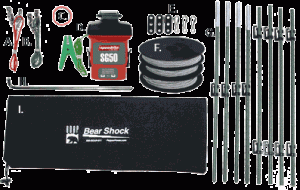
If you do run into a bear out on the trail, a dog may be tempted to run after the bear, barking, and the bear may feel that it has to defend itself. Dogs can be great instigators of trouble, although when the bear charges the dog or attacks the dog, the dog is going to run back to you, and he will be bringing the scared, angry bear with him. An encounter like this is completely preventable, by placing a leash on the dog when you are out on the trail. This and other safety tips are necessary for you to pay heed to in order to protect your dog and yourself as well. You could read more here about how you could enjoy fun activities and explore the outdoors with your dog in a safe and enjoyable manner.
Coming back to hiking with dogs, if you are going to be traveling in bear country with your dogs, leash them, but also give them a job to perform. Dogs can carry their own food and, possibly, other supplies on their backs. Keep the load light, though, dogs should not be required to haul too much weight on the trail. There are even backpacks built exclusively for dogs. If the dog is required to carry important supplies, then it should be leashed. A hot, tired dog isn’t going to consider the load on his back when he sees a wide, muddy puddle or a deep, pristine mountain lake. A dog carrying sleeping bags should be leashed, at least until the backpack is removed.
Dogs do make excellent companions on the trail. Unlike some of your friends at the bottom of your call list, the dog will not complain out on the trail. Dogs can also sense possible dangers long before their human counterparts, and dogs may sense that cow moose around the bend, or the rattlesnake coiled at the other side of the log. Although, proper precautions should be taken, when hiking and backpacking with dogs in bear country.
Autumn Means Hunting Season
While autumn in many places marks the end of a busy summer and a transition to the winter, fall in the west means busy mountain ranges, busy rivers, and intense flights of migratory birds. Hunters begin to hit the mountain slopes in full camo in the archery season, and the bright orange jackets of rifle season eventually take over. Anglers flock to the big rivers for the intense hatches of mayflies and October caddis.
Later, in mid-October, hunters in camo, with Labradors or Chesapeake Bay Retrievers, maybe even Springer Spaniels, will throw duck decoys out onto a river or pond, and create the calls of a hen mallard, while hiding on the bank, shotgun at the ready (some curios folks may wish to learn is shotgun better than rifle?) Hunters will produce enormous flocks of goose decoys in fields of corn stubble or cut alfalfa, hiding in lay out blinds or ditches, using silhouettes, shells, or intricately carved full body goose decoys to lure in giant Canadian Honkers. Another important aspect of the fall is intense color. The greens of spring and summer give way to the yellowing leaves and grasses of fall and the colors combine with dramatic complexity.
The trees of fall are the obvious choice of dramatic color. A person only has to drive the banks of a western river with the bright yellow leaves of Cottonwood trees, offset by the bright, clear water of the river, to realize just how special of a time of year fall is. Also, in areas of the west that have dense stands of Aspen trees, the cloud of intense yellow that these trees present is inspiring. In the fall another landscape color that can cause serious drama is white. When the first snows cover the peaks of the mountains; the views of the mountains are juxtaposed with the greens and yellows of the valleys.
Some game animals of the west also exhibit intense color. Mallard drakes, for instance, have come out of their drab molt of summer, and the green feathers about its head are bright and intense. Brown Trout seem to absorb the yellow leaves that fall into the river and their scales turn bright yellow to gold in full spawning colors.
Be Prepared
Every hiker, camper, and hunter should carry something in his pack or on his person that can start a fire. Matches, flint, magnesium sticks, UDAP Bear Spray, etc., all are good options. But, what if a person in the outdoors has lost or left behind his tool to start fire, and they must start a fire in the backcountry in an emergency. While there are many ways to start a fire in an emergency, the Fire Plow Method is effective, although challenging it is challenging to get it just right. The fire plow method is effective because it allows a person to use nothing more then the friction of wood against wood to ignite a spark.
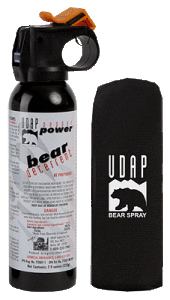
The Fire Plow method is only effective if a person has a cutting instrument. A knife, or, if no knife is present, a sharp narrow rock can be used for cutting. After gathering wood and tinder, prepare the plow. The plow is nothing more then a stick that is roughly one foot long, and one, to one and a half inches, wide. Use the cutting tool – knife or sharp stone – to carve a point into the plow at a forty-five degree angle. Also, a base made up of wood will have to be created. The base should be wider than the plow, sturdy and flat. Carve a flat spot into the base with the cutting instrument for stability, and carve a shallow groove at the width of the plow to give the plow a guide to be worked in. Put the plow into the groove and begin to work it back and forth along the track of the base. Once the wood on the base feels softer, or, possibly, there is smoke in the track, increase the pressure on the stick until a small ember forms over the wood. Slide the ember, carefully, onto a pad of tinder – dried grasses, etc. – and, when the ember begins to burn the tinder, slightly blow on the timber to increase the fire.
The Fire Plow method is difficult to perfect, and, if a person is relying on this method for starting a fire in the woods, practice should be intense and repetitive, careful and consistent. And as always, don’t forget your UDAP Bear Spray!
Boots for Hiking and Backpacking
Finding the right hiking boot can be a challenge. The most important aspect to choosing a hiking boots is comfort. Also, the boot should match the hikers ambitions. Day hikers, hiking upon a well-maintained trail, may only need a lightweight trail runner. A backcountry hunter, however, may need a much stiffer boot, designed for steep, rocky terrain.
Hiking shoes and trail runners are lightweight options, and many day hikers and backpackers carrying light loads will wear trail runners, because of the lightweight, supple fabric. Shoes are generally more comfortable and forgiving. However, the comfort of wearing shoes does have a tradeoff, because most shoe styles do not offer quality ankle protection. A hiker travelling over steep, rocky terrain, or someone who needs to carry a heavy pack, may need to forgo that comfort for the stiffness of a boot.
Backpacking boots are usually stiff, and the boots are usually cut higher up on the ankle for protection. These boots enable the hiker to carry heavy loads. The stiff boot also helps the hiker on rocky terrain, because the foot doesn’t flex with the edges of rocks, and, when hiking on steep terrain, the stiff boot will help with a hiker’s fatigue. The one thing to remember about stiff boots is that there are break-in requirements. A boot may feel comfortable in the store, but when it is worn for a mile or so, the stiffness of the boot can tire out the foot much more quickly. Also, feet swell after strenuous use, and when feet swell, the boot becomes much more tight while hiking. If the boots fit well, then after the break-in time, they should become more comfortable.
Mountaineering boots are very stiff and offer a great amount of ankle support. Mountaineering boots are usually worn in very steep terrain or on icy, glacial terrain. The boots are also important for ankle protection when carrying very heavy loads.
When you have determined which boot matches your ambitions as a hiker, there are several things to consider when you choose your own boot. When purchasing a pair of boots, make sure that the boots fit. This sounds like a simple suggestion, and in many ways it is, but boots are worn in demanding locations. A dull pinch on a big toe, or a subtle pressure against the front pad of the foot can translate to an unbearable pain on the trail. Also, when you are trying on hiking boots, make sure to wear the same type of socks that you will use in the boots. If you are hiking in Merino Wool socks, for instance, don’t try on the boots with your sheer black business socks right after work. Also, if you wear orthotics, make sure to take those with you, because the cut on the orthotics, plus the size of your foot, may not match the foot bed of the boot.
Fishing for Steelhead
The Steelhead is an interesting species of fish. Steelhead are anadromous, which means that the fry are hatched in eggs in fresh water, and then grow in size in that fresh water before swimming downstream to the ocean, and the fish will spend anywhere from one to three years in the ocean eating squid, until it is time for the fish to return to its native river to spawn. Unlike the Salmon, however, the Steelhead will survive the spawn and can make the journey back into the ocean. Scientists who work to improve the numbers of wild Steelhead have even developed tactics to catch spawning bucks and transport the caught fish back downstream, where it ascends the river for a second or even third time, to fertilize eggs.
Steelhead swim up watersheds on the west coast and even as far inland as Idaho. Steelhead are separated into two distinct species: summer run Steelhead and winter run Steelhead. A summer run Steelhead will swim into its native water in the late months of summer and spawn into the late fall. The summer run Steelhead also makes the longest journey to spawn, while the winter run fish only spawns in coastal streams and may only travel short distances that can range from one hundred feet to thirty miles.
The rivers systems that these fish call home, from the Salmon River and the Frank Church Wilderness of Idaho to the remote coastal rivers of British Columbia and western Washington, can be remote and anglers should be prepared for the possible challenges that can come from fishing in a remote area.
A popular river for fishing summer run steelhead is the Clearwater River in Idaho. The Steelhead will begin to arrive in the river in the summer months, and when the fall temperatures drop, the fish can be found up the entire river system. Anglers adorned in both spin and fly tackle will run their lures through the deep holes and riffles. Anglers driving jet boats and anglers rowing drift boats will share the same waterway. And while the Clearwater is not a place for complete solitude, the immense forest surrounding the river is, and black bears, elk, and deer can be seen walking the tree line above the river.
As always, when visiting one of our fantastic National Parks or enjoying the great outdoors, please be sure to bring along your UDAP Bear Spray.
Yellowstone Park after Labor Day
After the Labor Day holiday, the incessant tourist crowds in Yellowstone National Park will dwindle, and solitude can again be found on the roads, rivers, and hiking trails. Yellowstone National Park is a wonderful place to be in the fall. The leaves of the trees begin to turn yellow and add a new layer of depth to the endless greens of spring and summer. The roads are more open and comfortable to navigate, and if you enjoy spotting animals from the roads while you drive through the park, the cooler weather allows most of the animals to be more active for longer periods of the day.
The elk of Yellowstone get active in the early fall and when the rut is peaked, you can spend a full day watching a big bull elk chase and herd cows in grass meadows. Bugling bulls are commonplace in the rut, and if you spend any time camping in the park, and elk are nearby, it may be difficult to sleep with the nighttime and early morning bugles. Although, listening to bull elk bugle back and forth is an inspiring experience.
The rivers of Yellowstone feel more open and the cooler weather will trigger Blue Wing Olive and Midge hatches throughout the fall fishing season. The cutthroat trout that inhabit rivers like the Lamar, Yellowstone, and Gardiner Rivers on the northeast end of the park, and the Madison, Gibbon and Firehole Rivers of the west, will come up to the surface to feed on the insects in the late mornings and afternoons. A handy tip for fishing Yellowstone National Park, and it applies at any time of the year is: if you hike out of sight of the road, and you start fishing at that point, continuing to work your way from the road, most of the fish will be fresh and rested, because most everyone who visits the park for vacation rarely adventures more than one hundred yards from the nearest road.
Regardless of what your reasons are for being in the park this fall – the dramatic colors, the active animals, or the solitude – Yellowstone is an incredible place to spend any amount of time. And remember, Yellowstone is a wild place, and you should always be prepared for anything.
As always, when visiting one of our fantastic National Parks or enjoying the great outdoors, please be sure to bring along your UDAP Bear Spray.
Archery Elk Season
The archery elk season in Montana is underway. And, for the archery elk hunter who has spent his summer exploring remote stands of timber most hunters only glance at on Google Earth, while hiking countless backcountry miles and prematurely wearing the sole from a pair of hunting boots, congratulations on your effort and good luck on this seasons hunt. For those hunters, however, that haven’t spent as much time in the backcountry this season, or for those hunters that aren’t sure how to effectively scout for the season, here are a few tips to help.
When you are out scouting, the most obvious signs of elk activity are droppings, tracks, and rubs. Elk are transient by nature, so being really excited about evidence of elk may be jumping the gun, so to speak. Pay attention to the freshness of the rubs on the trees, or the prevalence of the tracks, and know that it only means that elk may frequent that area, and there are a few other ways of figuring out more precise locations and patterns for the elk when the rut begins.
If you are scouting and you find a bull before the rut has begun, don’t be too excited. That bull most likely will be somewhere else when the rut actually begins. So, when you are doing your preseason scouting, make sure to pay attention to the cow elk. When those cows go into heat, those bulls wont let them out of sight.
Also, while scouting, look for elk wallows (areas where bull elk may tear up the ground to reach the mud and moisture). When the rut is on, elk will use a wallow every day, most likely in the heat of the afternoon, so knowing where fresh or old wallows are is a big advantage. Those bulls run really hot during the rut, and rely on the mud and moisture from those wallows to cool down. Areas to look for that could be potential wallows are in meadows – pay close attention to the edges of the meadows where moisture may run off and collect. Also, look for bright green patches of grasses on densely timbered slopes. Near creeks and lake are obvious choices, and also near beaver dams.
And don’t forget your UDAP Bear Spray and have it accessible in a UDAP holster while you are bow hunting this season! 